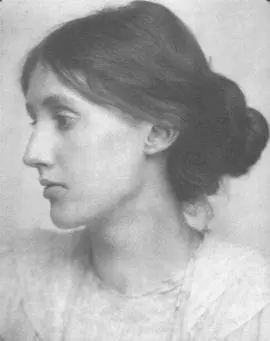Death of the Moth, and Other Essays
The Death of the Moth,
And Other Essays

Virginia Woolf
Table of Contents
Editorial Note
The Death of the Moth
Evening Over Sussex: Reflections in a Motor Car
Three Pictures
Old Mrs. Grey
Street Haunting: A London Adventure
Jones and Wilkinson
“Twelfth Night” at the Old Vic
Madame de Sévigné
The Humane Art
Two Antiquaries: Walpole and Cole
The Rev William Cole
The Historian and “The Gibbon”
Reflections at Sheffield Place
The Man at the Gate
Sara Coleridge
“Not One of Us”
Henry James: 1. Within the Rim
Henry James: 2. The Old Order
Henry James: 3. The letters of Henry James
George Moore
The Novels of E. M. Forster
Middlebrow
The Art of Biography
Craftsmanship
A Letter to a Young poet
Why?
Professions for Women
Thoughts on Peace in an Air Raid
EDITORIAL NOTE
It is ten years since Virginia Woolf published her last volume of collected essays, THE COMMON READER: SECOND SERIES. At the time of her death she was already engaged in getting together essays for a further volume, which she proposed to publish in the autumn of 1941 or the spring Of 1942. She also intended to publish a new book of short stories, including in it some or all of MONDAY OR TUESDAY, which has been long out of print.
She left behind her a considerable number of essays, sketches, and short stories, some unpublished and some previously published in newspapers; there are, indeed, enough to fill three or four volumes. For this book I have made a selection from these. Some of them are now published for the first time; others have appeared in THE TIMES LITERARY SUPPLEMENT, THE NEW STATESMAN NATION, THE YALE REVIEW, THE NEW YORK HERALD TRIBUNE, THE ATLANTIC MONTHLY, THE LISTENER, THE NEW REPUBLIC, and LYSISTRATA.
If she had lived, there is no doubt that she would have made large alterations and revisions in nearly all these essays before allowing them to appear in volume form. Knowing this, one naturally hesitates to publish them as they were left. I have decided to do so, first because they seem to me worth republishing, and second because at any rate those which have already appeared in journals have in fact been written and revised with immense care. I do not think that Virginia Woolf ever contributed any article to any paper which she did not write and rewrite several times. The following facts will, perhaps, show how seriously she took the art of writing even for the newspaper. Shortly before her death she wrote an article reviewing a book. The author of the book subsequently wrote to the editor saying that the article was so good that he would greatly like to have the typescript of it if the editor would give it to him. The editor forwarded the letter to me, saying that he had not got the typescript and suggesting that if I could find it, I might send it to the author. I found among my wife’s papers the original draft of the article in her handwriting and no fewer than eight or nine complete revisions of it which she had herself typed out.
Nearly all the longer critical essays included in this volume have been subjected by her to this kind of revision before they were originally published. This is, however, not true of the others, particularly of the first four essays. These were written by her, as usual, in handwriting and were then typed out in rather a rough state. I have printed them as they stand, except that I have punctuated them and corrected obvious verbal mistakes. I have not hesitated to do this, since I always revised the MSS. of her books and articles in this way before they were published.
Leonard Woolf.
THE DEATH OF THE MOTH
Moths that fly by day are not properly to be called moths; they do not excite that pleasant sense of dark autumn nights and ivy-blossom which the commonest yellow-underwing asleep in the shadow of the curtain never fails to rouse in us. They are hybrid creatures, neither gay like butterflies nor sombre like their own species. Nevertheless the present specimen, with his narrow hay-coloured wings, fringed with a tassel of the same colour, seemed to be content with life. It was a pleasant morning, mid-September, mild, benignant, yet with a keener breath than that of the summer months. The plough was already scoring the field opposite the window, and where the share had been, the earth was pressed flat and gleamed with moisture. Such vigour came rolling in from the fields and the down beyond that it was difficult to keep the eyes strictly turned upon the book. The rooks too were keeping one of their annual festivities; soaring round the tree tops until it looked as if a vast net with thousands of black knots in it had been cast up into the air; which, after a few moments sank slowly down upon the trees until every twig seemed to have a knot at the end of it.
1 comment